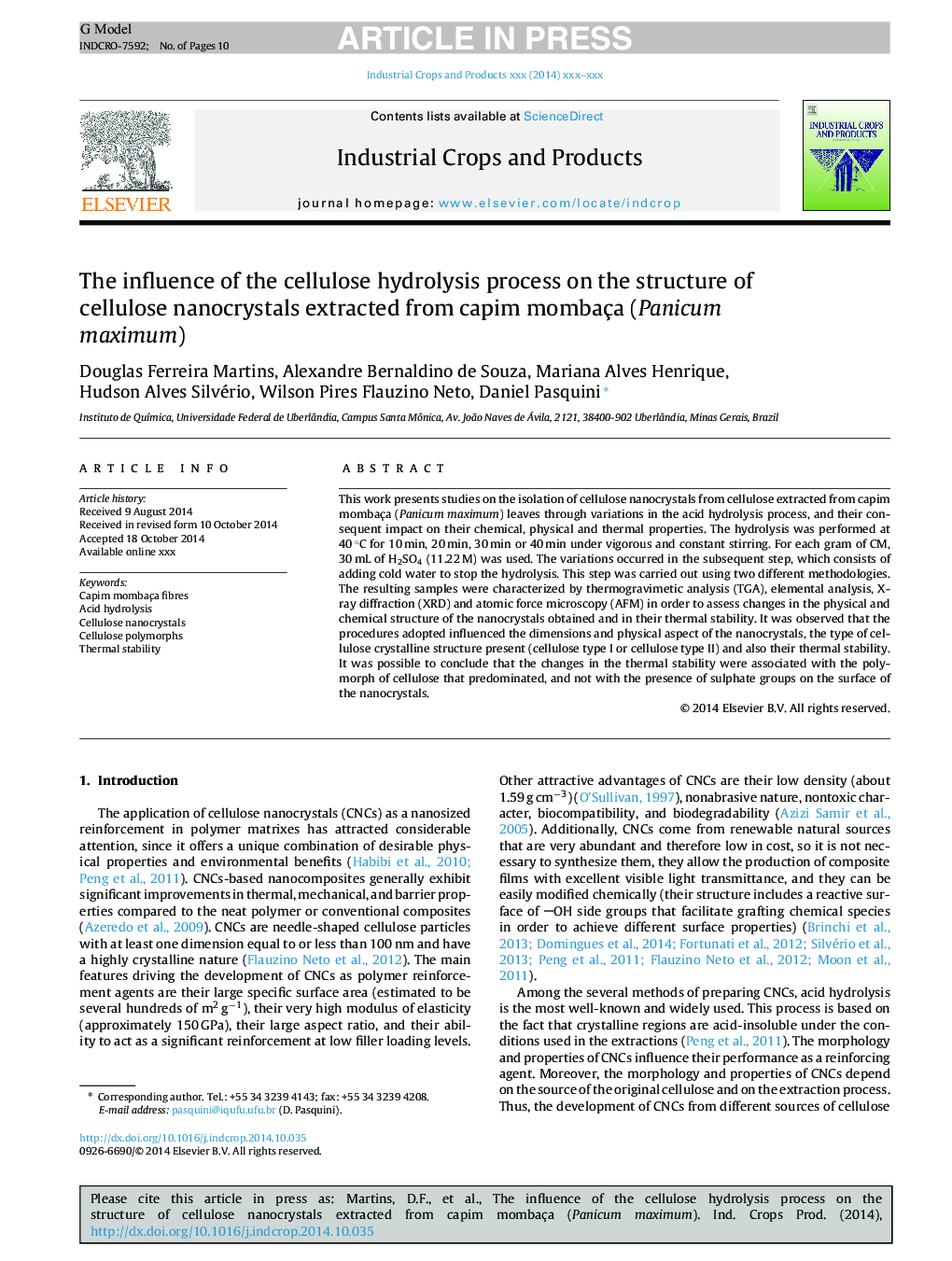| Article ID | Journal | Published Year | Pages | File Type |
|---|---|---|---|---|
| 6376207 | Industrial Crops and Products | 2015 | 10 Pages |
Abstract
This work presents studies on the isolation of cellulose nanocrystals from cellulose extracted from capim mombaça (Panicum maximum) leaves through variations in the acid hydrolysis process, and their consequent impact on their chemical, physical and thermal properties. The hydrolysis was performed at 40 °C for 10 min, 20 min, 30 min or 40 min under vigorous and constant stirring. For each gram of CM, 30 mL of H2SO4 (11.22 M) was used. The variations occurred in the subsequent step, which consists of adding cold water to stop the hydrolysis. This step was carried out using two different methodologies. The resulting samples were characterized by thermogravimetic analysis (TGA), elemental analysis, X-ray diffraction (XRD) and atomic force microscopy (AFM) in order to assess changes in the physical and chemical structure of the nanocrystals obtained and in their thermal stability. It was observed that the procedures adopted influenced the dimensions and physical aspect of the nanocrystals, the type of cellulose crystalline structure present (cellulose type I or cellulose type II) and also their thermal stability. It was possible to conclude that the changes in the thermal stability were associated with the polymorph of cellulose that predominated, and not with the presence of sulphate groups on the surface of the nanocrystals.
Related Topics
Life Sciences
Agricultural and Biological Sciences
Agronomy and Crop Science
Authors
Douglas Ferreira Martins, Alexandre Bernaldino de Souza, Mariana Alves Henrique, Hudson Alves Silvério, Wilson Pires Flauzino Neto, Daniel Pasquini,
